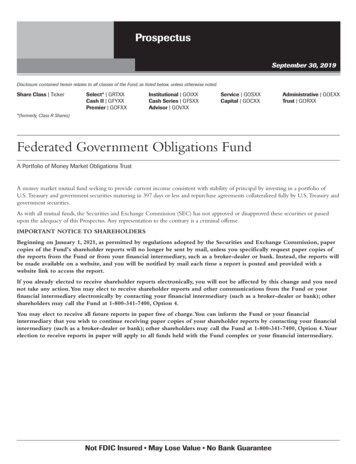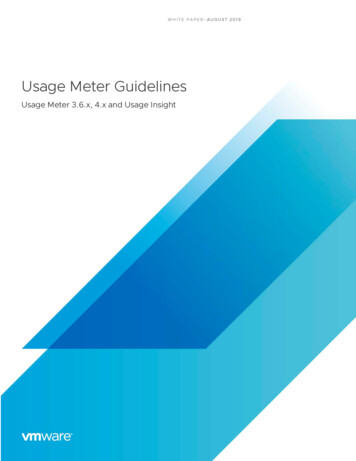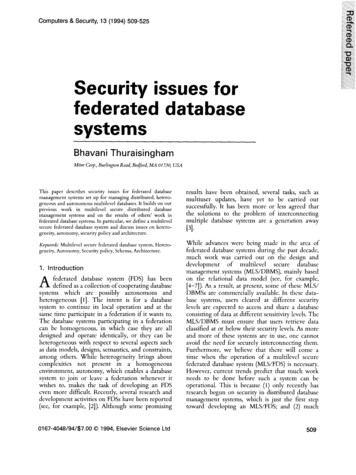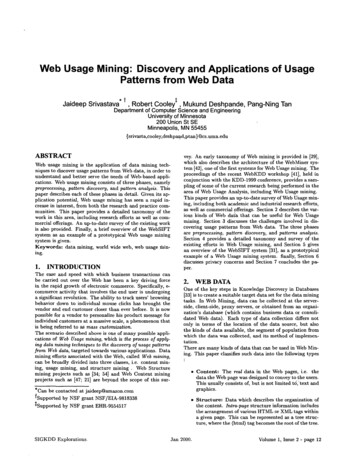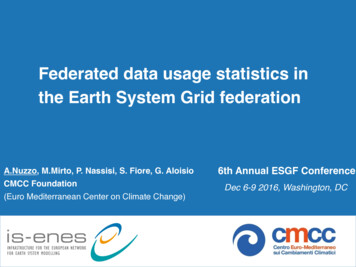
Transcription
Federated data usage statistics inthe Earth System Grid federationA.Nuzzo, M.Mirto, P. Nassisi, S. Fiore, G. AloisioCMCC Foundation(Euro Mediterranean Center on Climate Change)6th Annual ESGF ConferenceDec 6-9 2016, Washington, DC
OutlinevGoals and main tasksvArchitecture in the large – single node levelvArchitecture in the large – federation levelvFederation protocolvNew Dashboard-UI module
Goals and main tasksThe main goal of the DWT was to provide a distributed and scalable monitoringframework responsible for: capturing usage metrics, system status and aggregated information at thesingle site level and at the federated level providing the user with a user friendly interface including widget showingaggregated statistics and monitoring information.The Dashboard system faces this important challenge through two maincomponents:
Architecture in the large – Single node levelESGF DATA NODEFeatures: Extended set of staGsGcs Fine grain level Project specific views More scalable designESGF node manager filteresgf dashboardESGCETDASHBOARD QUEUEIDurl pathdura-onsize-mestampsuccessprocessed getMetadata(url path)Mul- Tier Database1 Datawarehouse A set of data martsETLESGF dashboardMETADATASOLRMETADATAESGF DASHBOARD-UI
Architecture in the large – Federation levelTill now, the federated statistics have been collected by manually executing a set ofdifferent queries on the various data nodes and importing the results into a singledatabase.v The federated protocol isbased on a hierarchical viewof the systemv Two kinds of nodes:Ø Collector nodeØ Leaf node
Architecture in the large – Federation levelLeaf nodev Dashboard back-endengineØ A data warehousestoring all the datarelated to thedownloadsØ A set of data martscontaining specificstatistics informationv A set of RESTful APIproviding the collectornode the possibility toaccess data marts andgetting the statistics.
Architecture in the large – Federation levelCollector nodeThe collector node has a more complex structure because, in addition to making itsinformation available to the collector through the RESTful API, is in charge to queryits leaf nodes.The collector node is composed by:v data warehouse and data martsv RESTful APIv xml configuration filev federation componentA first prototype of such protocol has beensuccessfully installed and tested on foursites: CMCC, DKRZ, NASA/JPL, PCMDI
New Dashboard-UI – Statistics Overview
New Dashboard-UI – Statistics OverviewRegistered Users and Number of Downloads per Project
New Dashboard-UINumber of Downloads byCon-nent and Countries
New Dashboard-UINumber of Users byCon-nent and Countries
New Dashboard-UINumber of Registered Users by IdPs
New Dashboard-UI – Data Usage Statistics sectionNumber of download over -meNumber of download per host
New Dashboard-UI – Project specific sectionObs4MIP4 project
New Dashboard-UI - Client statistics sectionNumber of users whomade a download
New Dashboard-UI – Federated Data Archive sectionFilter by data node
New Dashboard-UI – Federated Data Archive sectionTotal number of datasets and related size for each Model and Modeling Ins-tutefor CMIP5 project (data obtained by SOLR module).
New Dashboard-UI – Service status sectionDeployment distribu-on
Thank you
vNew Dashboard-UI module. Goals and main tasks The main goal of the DWT was to provide a distributed and scalable monitoring . More scalable design Architecture in the large - Federation level v The federated protocol is based on a hierarchical view of the system v Two kinds of nodes:
